Can a self-cleaning oven kill you? As bizarre as this question may seem, it has been circulating among homeowners and cooking enthusiasts for years. While self-cleaning ovens offer convenience and efficiency when cleaning up after a cooking session, some individuals have expressed concerns about possible dangers associated with their use.
In this article, we will delve into the mechanisms of a self-cleaning oven to uncover the truth behind its alleged threat to your safety. We will cover aspects such as high temperatures and chemicals, the potential release of toxic fumes, and proper ventilation measures, all to answer the burning question: can self-cleaning oven kill you? Read on to find out what our investigation reveals and to learn more about possible precautions you can take to ensure the safe operation of this useful kitchen appliance.
What Is A Self-Cleaning Oven?
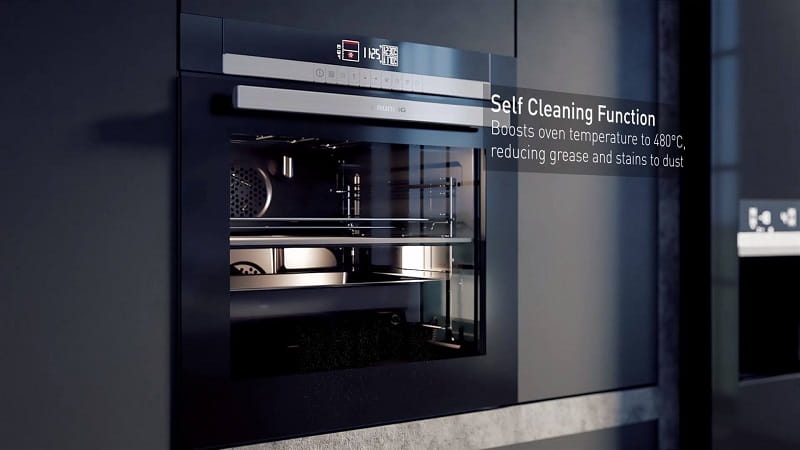
When I first heard about self-cleaning ovens, I was intrigued. What is a self-cleaning oven, exactly? I did some research and discovered that it’s a game-changer. A self-cleaning oven is an oven that has a built-in cleaning cycle. This cycle uses high heat to burn off any food particles or grease that may be stuck to the walls or racks of the oven. The cycle can last anywhere from two to six hours, depending on the model of the oven.
The self-cleaning cycle is pretty simple to use. All you have to do is remove the racks and large pieces of food from the oven, close the door, and press the self-cleaning button. The oven will heat up to around 900 degrees Fahrenheit and begin cleaning.
One of the major benefits of a self-cleaning oven is that it saves you time and effort. Instead of having to spend hours scrubbing the oven with harsh chemicals and a scrub brush, you can press a button and let the oven do the work. This is especially helpful if you’re someone who likes to cook frequently and tends to make a mess in the oven.
Another benefit of a self-cleaning oven is that it’s safer than traditional ovens. Since the cleaning cycle uses heat to clean the oven, there’s no need for harsh chemicals or cleaning solvents. This means you don’t have to worry about inhaling toxic fumes or accidentally ingesting harmful chemicals.
Of course, there are a few downsides to self-cleaning ovens as well. For one, they tend to be more expensive than traditional ovens. Additionally, the high heat of the self-cleaning cycle can sometimes damage the oven’s heating elements or other components.
Why People Use the Self-Cleaning Oven Feature?
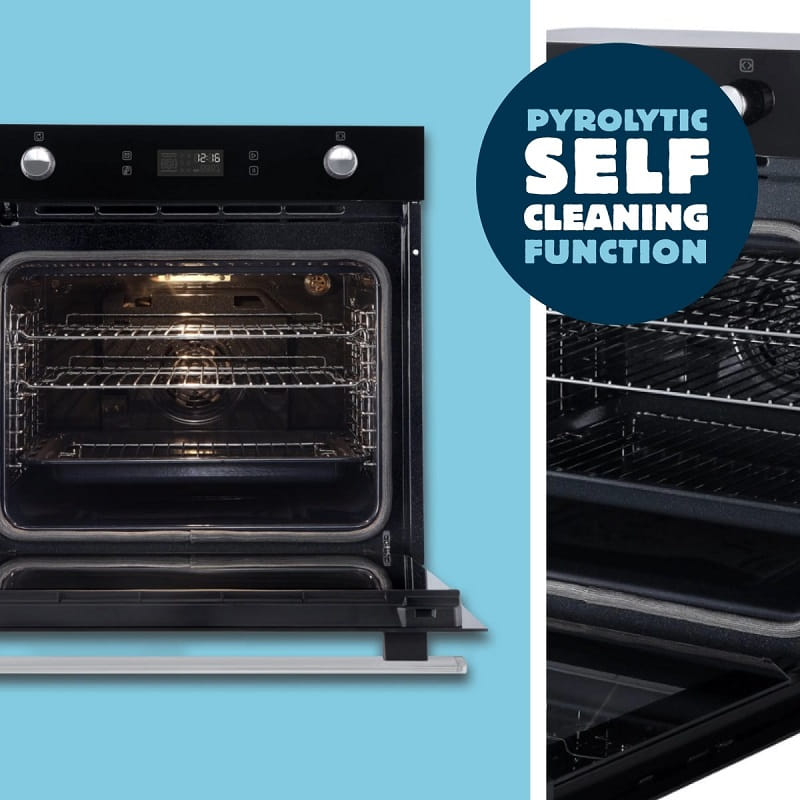
The self-cleaning oven feature has been a lifesaver for me. I used to dread scrubbing the oven after a big baking session, but now I can press a button and let the oven do the work. But why do people use the self-cleaning oven feature? Let’s explore.
First of all, the self-cleaning feature is incredibly convenient. It saves time and effort, which we could all use more of. Instead of spending hours scrubbing the oven, we can just set the self-clean feature and let it do its thing. Plus, I can use that time to relax or catch up on other chores.
Another reason people use the self-cleaning feature is for hygiene purposes. Our ovens can become dirty and filled with bacteria over time, especially if we use them frequently. The self-clean feature heats the oven to high temperatures, which helps kill any bacteria or germs lurking inside. This is especially important if you have small children or pets.
Additionally, the self-cleaning feature can help extend your oven’s life. When we neglect to clean our ovens regularly, the grime and grease can build up over time and affect the oven’s performance. Using the self-clean feature, we can ensure that our ovens are functioning at their best and avoid costly repairs down the line.
Of course, there are some downsides to using the self-cleaning feature. It can be a bit noisy and smelly and uses a lot of energy. It’s also important to note that not all ovens have a self-cleaning feature, so it’s always a good idea to check before you buy.
Can Self-Cleaning Oven Kill You?
Did you know that using the self-cleaning feature on your oven can be dangerous to your health? When used, the oven produces carbon monoxide, a poisonous gas that can be deadly if inhaled. In addition, the fumes produced during the cleaning cycle can harm animals in your home, causing polytetrafluoroethylene toxicosis.
To stay safe, it is recommended to leave home during the self-cleaning cycle and to never be in the same room as the running oven, along with any human or pet. While Teflon coating is safe during baking, it is important to be cautious during cleaning. It is important to note that electric ovens do not produce carbon monoxide, but the fumes are still hazardous. It is always better to be safe than sorry, so take the necessary precautions to protect yourself and those around you.
What Are The Risks Of Carbon Monoxide Poisoning While Using A Self-Cleaning Oven?
There are potential risks of carbon monoxide poisoning when using a self-cleaning oven. Carbon monoxide is a colorless and odorless gas that can harm humans in high concentrations.
The self-cleaning function of an oven can produce carbon monoxide due to the high temperatures generated during the cleaning process. The gas can accumulate in poorly ventilated spaces and cause health problems, such as dizziness, nausea, headaches, and even death.
It is essential to be aware of the risks and take necessary precautions when using a self-cleaning oven, such as ensuring proper ventilation and avoiding prolonged exposure to the fumes.
Related Reading:
- Is It Safe To Eat Food Cooked In A New Oven
- How Long To Cook Pork Tenderloin In Oven At 400
- How Long to Cook Chuck Roast in the Oven
- How Long To Cook Tri Tip In Oven At 375
Can Self-Cleaning Ovens Cause Polytetrafluoroethylene Toxicosis?
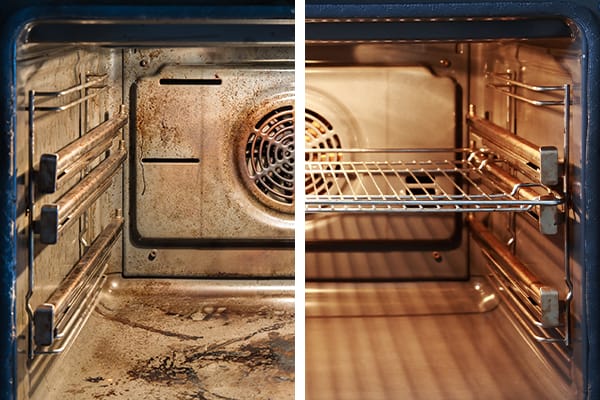
Self-cleaning ovens may seem like a convenient and time-saving feature, but did you know that they can potentially cause harm to your household pets? Specifically, birds are more vulnerable to polytetrafluoroethylene (PTFE) toxicosis – a condition caused by inhaling the toxic fumes emitted during self-cleaning. When the oven heats to very high temperatures, the Teflon coating releases fumes that can trigger flu-like symptoms.
Therefore, when birds or other pets are present, avoiding the self-cleaning cycle is recommended. The North Texas Poison Center suggests leaving home during the self-cleaning cycle to avoid inhaling the toxic fumes. Generally, the Teflon coating inside the oven is safe when baking, but it’s important to be mindful of the potential risks associated with the self-cleaning feature.
What do Self-Cleaning Ovens emit Harmful Fumes?
When the oven is in self-cleaning mode, it emits harmful fumes that can be hazardous to the health of any pets in the home. These fumes include carbon monoxide and nitrous oxide, which can also be dangerous to young lungs. Additionally, the Teflon coating in the oven can emit toxins when exposed to high heat during the cleaning cycle.
Although the fumes are not harmful to breathe in, they can be very unpleasant to smell and potentially harm the home’s indoor air quality. Therefore, taking precautions and ensuring proper ventilation when using the self-cleaning feature is important.
Is There A Risk Of Oxygen Deprivation While Using A Self-Cleaning Oven?
When using self-cleaning ovens, it’s best to err on the side of caution, especially if people in the household have respiratory issues. According to factual data, running the cleaning cycle on an oven produces carbon monoxide emissions that could potentially cause harm to anyone in the home. Carbon monoxide is a colorless, odorless gas that can cause oxygen deprivation, leading to serious health problems or even death.
Therefore, anyone in the house, especially those with chronic obstructive pulmonary disease or asthma, should avoid the kitchen when the oven is in self-cleaning mode. While there are many benefits to using the self-cleaning feature on an oven, it’s crucial to understand the potential health risks that come with it.
Can The Self-Cleaning Function Create A Fire Hazard If Not Used Properly?
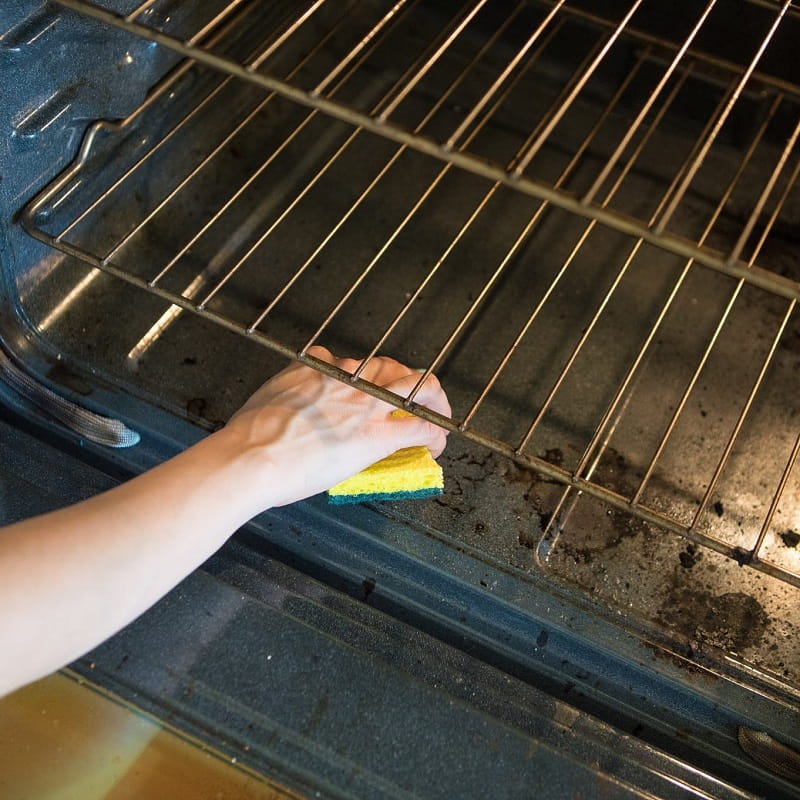
Self-cleaning ovens are a convenient and popular feature in many kitchens, but they can also pose a Fire Hazard if not used properly. The self-cleaning feature can cause a fire if large food particles are not removed beforehand or if the oven’s control panel fails after many uses. Carbon monoxide is released as the oven dirt and grease are incinerated, representing a real hazard.
However, this doesn’t mean people shouldn’t use self-cleaning ovens. If individuals take the necessary precautions and frequently clean and prepare their ovens, they can greatly reduce the risks associated with using their self-cleaning feature. Remembering that anything can catch fire is important, so following the proper instructions and paying close attention to the oven during use is crucial.
Are Self-Cleaning Ovens Dangerous For Pregnant Women?
Self-cleaning ovens have been a concern for pregnant women due to the high heat in the cleaning process. However, facts show that self-cleaning ovens are safe for pregnant women. They do not emit dangerous fumes or use chemicals, only high heat to burn off the dirt and grime. The Teflon lining inside the oven can release gases at high temperatures, but the amount is not harmful to pregnant women.
Following the manufacturer’s instructions and avoiding opening the oven during the cleaning cycle is always recommended. Pregnant women can use self-cleaning ovens without any hassle and take necessary precautions to reduce the heat and odor generated during the process.
Are Self-Cleaning Ovens Dangerous For Elderly People?
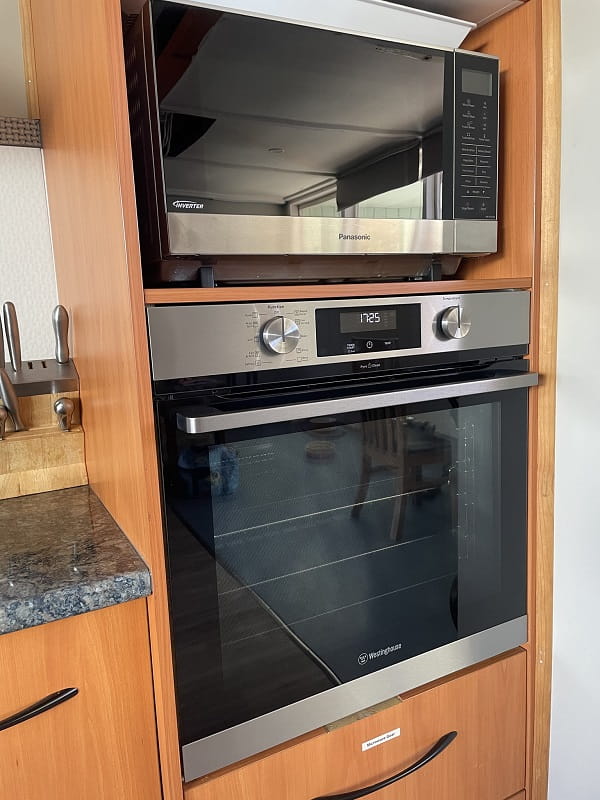
The high temperatures and fumes during the cleaning cycle can cause breathing issues and headaches. The Centers for Disease Control and Prevention notes that elderly individuals are particularly vulnerable to the adverse effects of these fumes.
However, as long as proper precautions are taken, such as ensuring proper ventilation and keeping pets and elderly individuals out of the kitchen during the cleaning cycle, the risks can be minimized. It’s always a good idea to consult with a medical professional before using a self-cleaning oven, particularly for those in higher-risk groups.
How To Safely Use Your Oven’s Self-Cleaning Function?
It’s essential to use this function safely to avoid any potential hazards. Here are some tips on how to safely use your oven’s self-cleaning function:
Stay Awake And Nearby
Never leave your oven unattended during the self-cleaning cycle. It’s important to stay awake and nearby in case anything goes wrong. Keep an eye on the oven and be prepared to turn it off immediately if you notice any smoke or unusual smells.
Lock The Oven Door
Before starting the self-cleaning cycle, make sure to lock the oven door. This safety feature prevents you from accidentally opening the door during the cycle. Keeping the door locked is important until the oven has completely cooled down.
Let The Oven Cool Down Completely
After the self-cleaning cycle, let the oven cool down completely before opening the door. This can take several hours, so be patient. Opening the door too soon can cause burns or injury from the hot air and steam that escapes.
Wipe As Many Grease As Possible
Before starting the self-cleaning cycle, wipe away as much grease and food debris as possible from the inside of the oven. This will make the self-cleaning process more effective and safer.
Maximize Ventilation
During the self-cleaning cycle, your oven will emit smoke and fumes. Make sure to maximize ventilation in your kitchen by opening windows and turning on the exhaust fan. This will help to reduce the amount of smoke and fumes in the air.
How Do You Know If Your Self-Cleaning Oven Is Malfunctioning And Posing A Safety Risk?
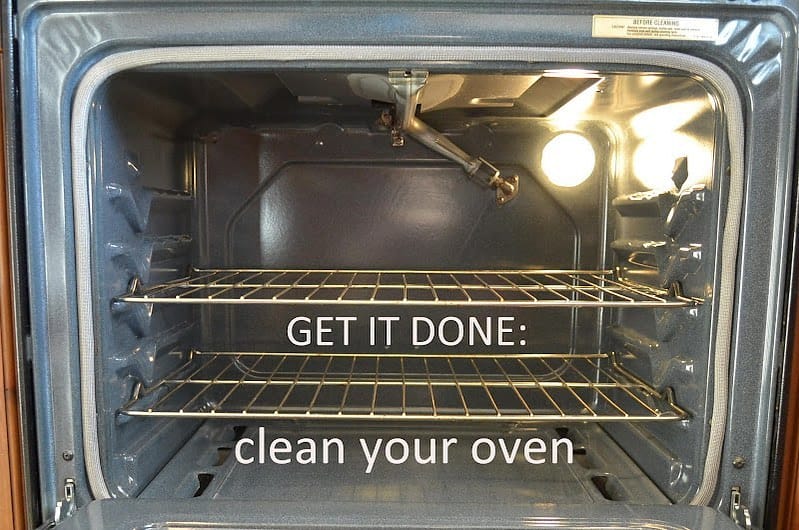
Have you ever considered if your self-cleaning oven is functioning properly and not posing a safety risk? Here are some red flags to look out for:
- Foul Smell: While it’s normal to smell a bit of burning during self-cleaning, a foul odor may indicate something that shouldn’t be burning. This could be caused by leftover food debris or a malfunctioning oven.
- Smoke: Smoke during the self-cleaning cycle is abnormal and should be considered a serious warning sign. It could be caused by a number of issues, including a broken heating element or a clogged vent.
- Door Lock Failure: The self-cleaning cycle locks the oven door to prevent accidental burns. It could be unsafe if the door doesn’t lock or unlock properly.
- Excessive Heat: If the oven becomes too hot to touch during the self-cleaning cycle, it could be a sign that the oven is malfunctioning. This could result in a fire if not addressed promptly.
- Error Messages: If your oven displays error messages during the self-cleaning cycle, it could indicate a problem with the oven’s sensors or other components.
Taking action immediately is important if you notice any of these warning signs. Please turn off the oven and unplug it from the power source. Contact a professional to diagnose and repair the issue before using the oven again.
What Safety Precautions Should Be Taken With Teflon Coating In Self-Cleaning Ovens?
Regarding self-cleaning ovens with Teflon coating, some important safety precautions must be remembered.
First and foremost, it’s important to follow the manufacturer’s instructions for operating the self-cleaning feature. This includes setting the temperature and duration of the cleaning cycle and any recommended safety precautions.
One of the most important safety precautions is ensuring the oven is well-ventilated during the self-cleaning cycle. This means opening windows and turning on exhaust fans to allow any fumes or smoke to escape. It’s also important to avoid using the oven during the cleaning cycle, as this can lead to a buildup of heat and potentially cause a fire.
When it comes to Teflon coating specifically, it’s important to avoid using abrasive cleaners or scrubbers that can damage the coating. Instead, use a soft cloth or sponge and a mild cleaning solution to wipe away any residue gently. Avoid using sharp objects or scraping the Teflon coating, as this can cause it to flake off and contaminate your food.
It’s also important to regularly inspect the Teflon coating for any signs of damage or wear. If you notice any scratches, chips, or peeling, it’s best to stop using the oven and contact the manufacturer for repair or replacement.
Self-Cleaning Oven Alternatives
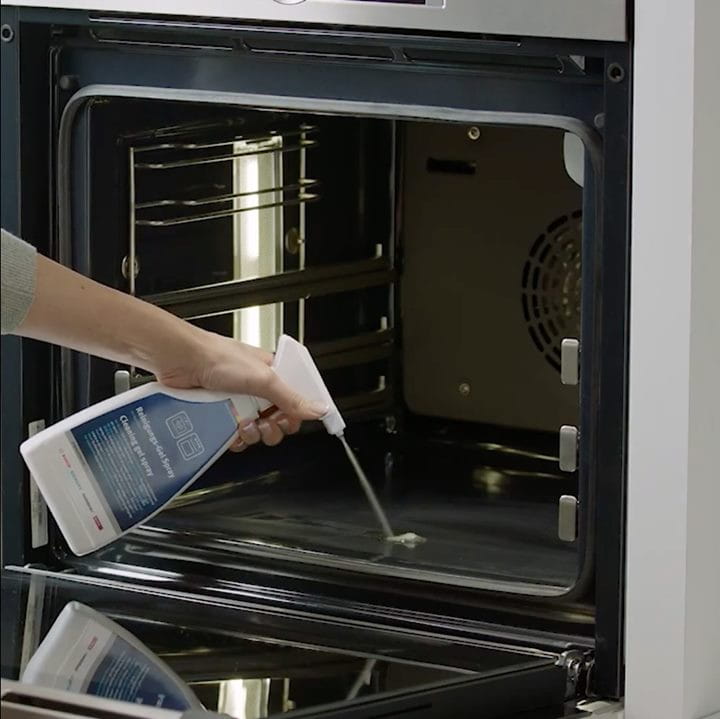
There are alternatives available that are both safer and more environmentally friendly. For example:
- Steam cleaning ovens, use water at lower temperatures to clean the oven.
- DIY natural cleaners made from baking soda and vinegar also effectively remove stubborn stains without harsh chemicals.
- Additionally, wiping down the oven with a wet, soapy sponge before cooking and using baking soda for a deep clean can help keep the oven looking and smelling fresh without needing a self-clean cycle.
By experimenting with different cleaning methods, homeowners can find the best solution, whether a self-cleaning oven or an alternative method.
Are Electric Ovens More Or Less Dangerous Than Gas Ovens During Self-Cleaning Cycles?
When self-cleaning, many wonders if electric ovens are more or less dangerous than their gas counterparts. To be factual, the answer is not straightforward. While gas ovens do not have the same risks associated with Teflon coatings breaking down, they produce carbon monoxide during the cleaning process. On the other hand, electric ovens require more insulation to withstand high temperatures, which can put the electronic control panel at risk of failure.
Ultimately, both types of ovens have potential dangers during self-cleaning cycles. To ensure safety, it is recommended to open windows, use a kitchen exhaust fan, and avoid being in the kitchen if anyone in the household has respiratory issues.
FAQs About Can Self-Cleaning Oven Kill You
How Often Should You Use The Self-Cleaning Function On Your Oven To Maintain Safety And Cleanliness?
According to experts, a thorough self-clean every four to six months is typically sufficient for most households. However, using the self-cleaning feature is best only when the oven is heavily soiled. Some recommend running the cycle monthly to prevent heavy build-up, while others suggest limiting use to six times yearly.
Of course, the frequency of self-cleaning will depend on usage and cooking habits. In general, it’s recommended to deep-clean the oven every three months to keep it clean and functioning correctly. It’s important to note that the self-cleaning cycle may take several hours to complete, depending on the soil level, so it’s best to plan accordingly.
Should Pets Be Kept Away From Self-Cleaning Ovens While In Use?
Keeping your pets away from self-cleaning ovens while in use is advisable. The high temperatures generated by the cleaning cycle can cause harm to animals if they are left inside the oven. Additionally, the fumes emitted during the first activation of the self-cleaning feature can harm birds and small animals.
Chris Zeissler, the technical service supervisor at Repair Clinic, suggests moving pet birds to another part of the house to keep them safe during cleaning. Keeping children and pets out of the kitchen during self-cleaning cycles is essential, as the front of the oven can become very hot.
What Happens If You Leave The Racks In A Self-Cleaning Oven?
Leaving oven racks in a self-cleaning oven may seem easy to keep clean, but it can lead to significant damage. The high heat in the self-cleaning cycle can cause the racks to discolor, lose their sheen, and even warp. This can make them difficult to use and even create a fire hazard.
To prevent this from happening, it is recommended that oven racks be removed before beginning a self-cleaning cycle. If the racks are particularly dirty, they can be soaked in water and cleaned separately.
Can Self-Cleaning Ovens Catch On Fire?
Self-cleaning ovens require extremely high temperatures, around 880 degrees Fahrenheit, to burn off any food particles left inside. If large food particles or oily residues remain, they can ignite during self-cleaning and cause a fire. It’s important to remove all large food particles and use the oven’s self-cleaning feature only as directed to minimize the risk of a fire.
Turning off the oven, keeping the door closed, and calling for professional help are recommended in a fire. With proper use and maintenance, self-cleaning ovens can offer a safe and convenient option for keeping one’s kitchen clean.
Conclusion
In conclusion, can a self-cleaning oven kill you? While there is a slight risk of fire or inhalation of harmful fumes, a self-cleaning oven is perfectly safe if you follow the manufacturer’s instructions and take the proper precautions. Just use common sense and be aware of the potential hazards.
So, a self-cleaning oven is generally safe to use as long as you take the necessary precautions. While the thought of a kitchen appliance being able to harm you is scary, the reality is that self-cleaning ovens have a good safety record. So go ahead and enjoy your clean oven – make sure to be careful!
References:
- https://www.whirlpool.com/blog/kitchen/how-does-a-self-cleaning-oven-work.html
- https://www.armandhammer.com/articles/clean-oven
- https://www.sun-sentinel.com/news/fl-xpm-2000-02-05-0002040514-story.html

Hey readers! Chip Holland here, and I’m a Manager of this website. My passion for writing about it only matches my passion for BBQ. Follow my blog for mouth-watering recipes, tips, and tricks for the perfect smoke, grill, and BBQ. I’m sure you won’t be disappointed!
